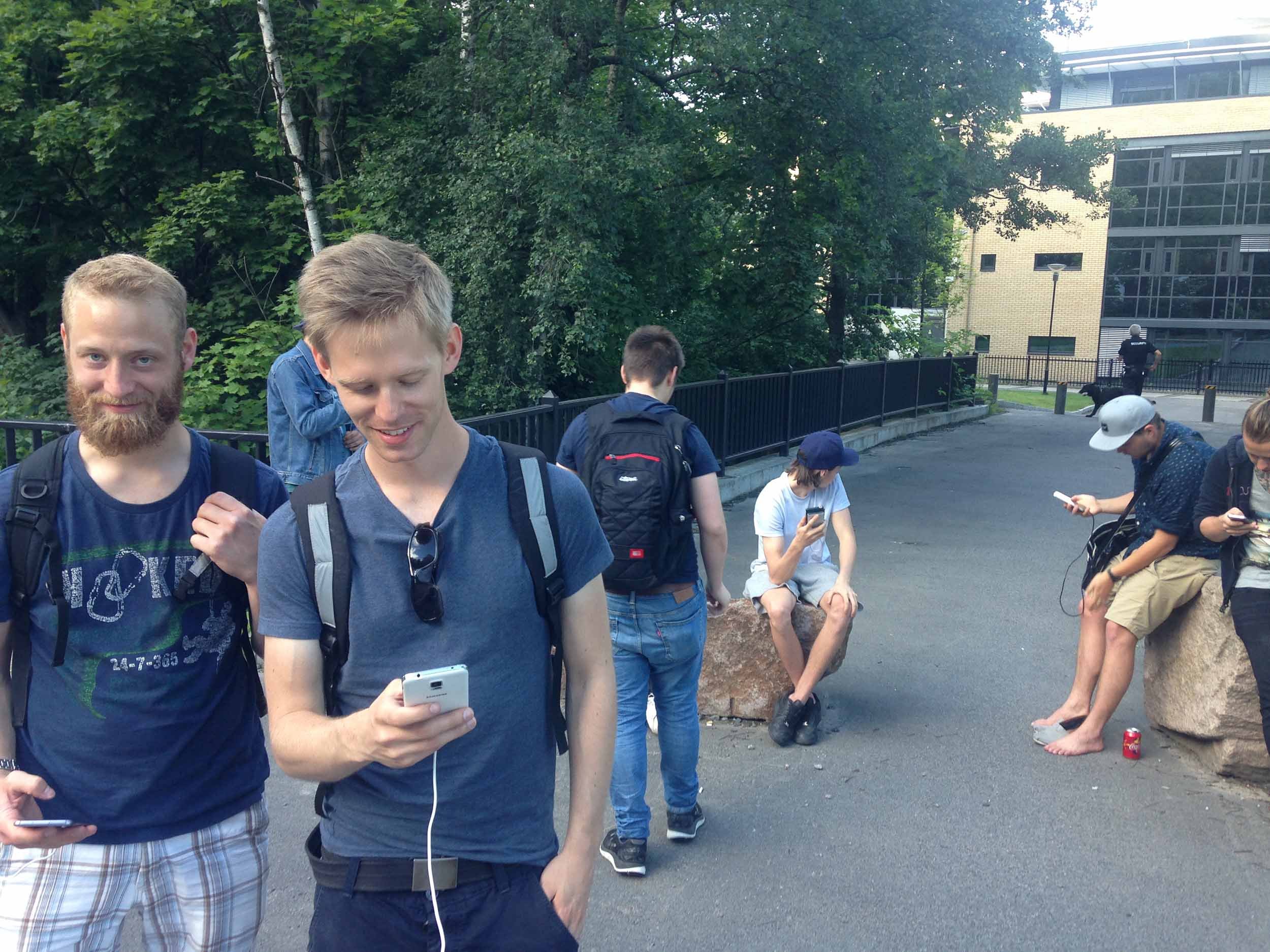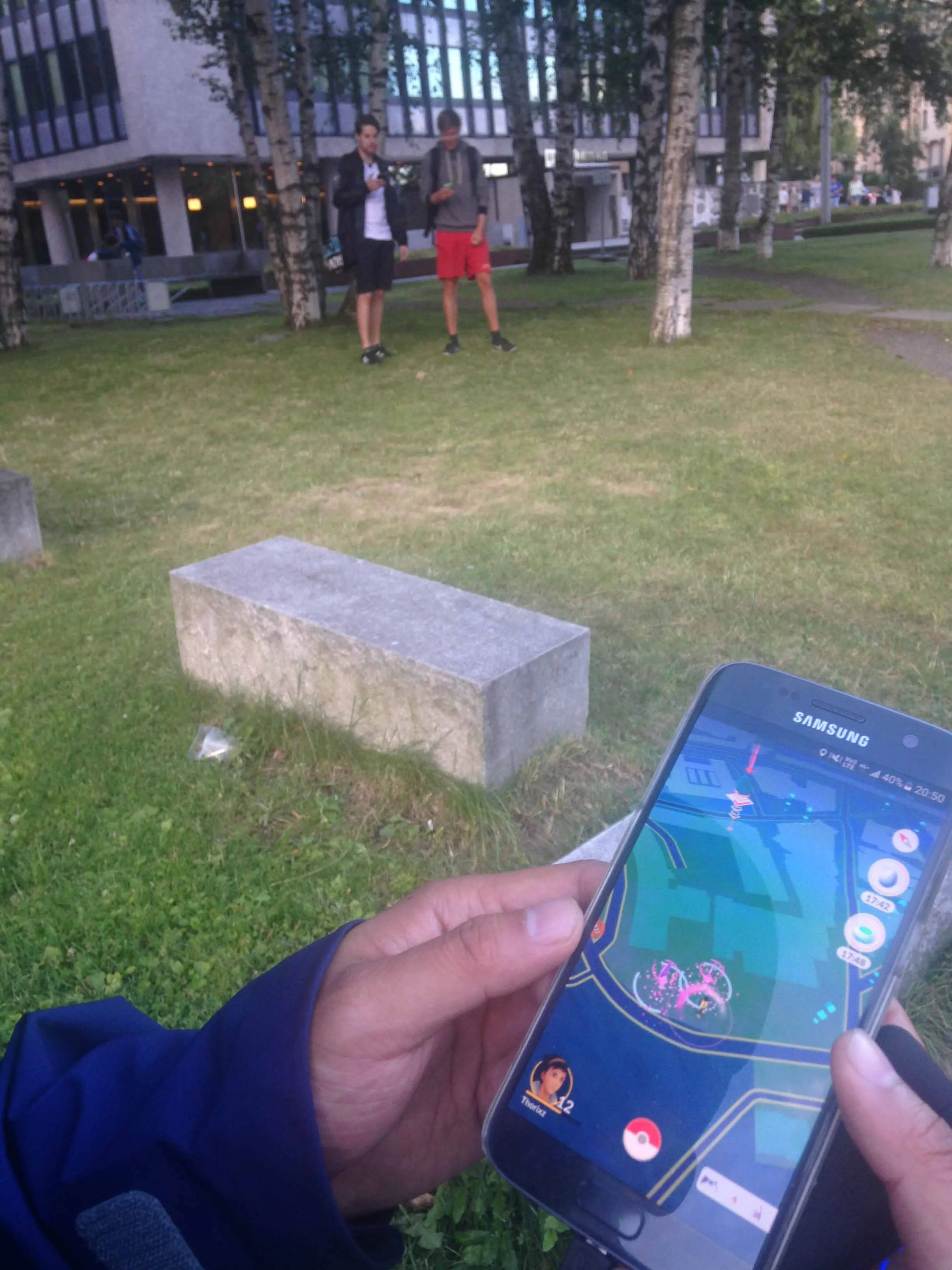Pokémon GO Review - A Social Fad?
Pokémon GO has become a global phenomenon, robbers are using in-game baits to lure gamers to desolate places, others stumble upon bodies trying to catch’em all. How good is the app really?
Franchise and cultural phenomenon
Pokémon was in the 90's and is still today, Nintendo’s second biggest franchise (after Mario). The concept is basically about kids catching wild animals or pocket monsters and using them as fighting partners against other kids, mimicking how the Romans enslaved the less fortunate as gladiators, or the Southern states enslaving Africans in the 1600's. But hey, what parent would dare spoil the fun? The franchise excelled on every platform it visited in the 90's, such as the trading card game, Nintendo 64, Gameboy, cartoons, toys etc. Who could ever forget the heart-wrenching episode 39 – Pikachu’s Goodbye, touching upon notions of finality?
Most noticeable was the Gameboy RPG version. Kids would go ape shit. At random, they would meet up in the streets, as there was always this one kid with a legit link cable so other children could fight, trade and inspect each other’s stuff. Or the one telling you how to clone Pokémon. This was before the age of WIFI, kids today will never know genuine discoveries and explorations as everything can be googled. It was truly a social phenomenon without the help of the Internet, which is very hard to envision in this day and age of tech conformities. The point is this: Pokémon GO, or just GO in this review, has a tough crowd to please, as it is tampering with the childhood of an entire generation.
Sinking ship
In the last decade Nintendo Wii was losing out to X Box and PlayStation in the battle of the 7th generation of video consoles in ’05 - ‘06, endangering the future of the Nintendo corporation. It meant that other franchises like Mario could get in the hands of developers of less integrity if Nintendo disintegrate. The reason? Because Nintendo Wii did not utilize established innovations, such as the Internet. They tried to renew and create a more immersive gaming experience through innovative controller solutions. Well, as it turns out, X Box and PlayStation won that battle by just connecting to the Internet, and automatically creating the ultimate immersive gameplay, without any real innovation. In 2011 Nintendo’s president Satoru Iwata went as far as saying that apps were the degenerate state of game development. His refusal to enter the app market cost Nintendo nearly 1 billion dollars. It’s therefore quite a surprise that Niantic, a third-party developer without any connection to the Nintendo corporation, is developing a supposedly ground-breaking app for Nintendo.
Pitch vs. Reality
Although the concept, then called Pokémon Challenge, had its modest beginnings as an April's Fool joke in 2014 (in collaboration with Google), the marketing campaign from joke to realization has always been mind-blowing. Nintendo showed promising clips of quite immersive Augmented Reality (AR) gameplay. A dad, probably a kid from the 90's, got to play with his kid in present time. Masses meeting up in Times Square to some kind of grand event, a complete celebration of the game’s possibilities. It is what every kid in the 90's dreamt about! The pitch was basically that planet Earth is the canvas for gameplay, and different Pokémon could only be found in specific places of the world. You are encouraged to walk and explore the wonders of the world, both in-game and in RL (real life).
Pokémon gathering: One of the guys in the parking lot told us how a girl landed a date with him, by putting a lure outside his apartment block. In front to the left are my childhood friends, Anders and Harald.
The real question is: does the app live up to the hype generated by the marketing campaign? The The AR is quite disappointing. It does not respond well to real-life conditions in front of the camera. The scaling is off; the 3D responsiveness is none-existent. For instance, a Pidgey managed to stand horizontally on a vertical platform, in this case, on a girl’s buttocks standing in front of me.
It does however manage to generate the same social phenomenon in real-life as seen on the marketing campaign. When walking by a desolate parking lot I met a bunch of guys hanging out in the middle of two pokélures and a gym. The funny thing is that none of them actually knew each other. Yet they were talking to each other as if they were BFF’s. People may have different associations when a bunch of random guys are hooking up in a desolate parking lot, yet I firmly believe GO may very well change that perception.
Gameplay and design
During the test we transformed two pokéstops to pokélures, which attracted multiple group of people out of nowhere, mooching off our lures.
GO is a location-based augmented reality (AR) mobile game. The Challenge proposal indicated a translation from traditional Google maps to the visual language of Pokémon, yet this did not happen, i will address this issue later on. GO borrows geo data from Google Earth, yet Niantic has not been able to convert the terrain or 3D building data from the pool. Everything is completely flat, buildings are just outlines, the only thing transformed is coloring on roads, grass, water and sky.
However, there are some cool and original features with GO, or maybe it is just a copy-paste feature from Niantic's Ingress. By integrating the most frequented spaces mapped out by Google as Poké stops and Gyms, places where you can get free items and battle other players. The Poké stops can again be transformed to the aforementioned lures, which attracts extra Pokémon to the stop. This can only be done having the lure as an item and most often only paying players are in possession of, but everybody else can benefit from as it is visible for everyone. This is exactly the feature innovative robbers in the U.S. are using to lure players to desolate places. Another feature is the incubator eggs, where you have to either walk or bike 5 km to hatch it (not an original idea actually, since it was introduced in the 2nd generation Pokémon games, but cool nonetheless).
The design of the game does not feel canon. The avatars do not follow the same anatomy, as sketched in the TV-series, the trading card game or the Nintendo games. GO does not follow the same design logic and function (GUI and UI) as its predecessors. Look at how the Final Fantasy franchise has successfully kept the same design logic across different storylines, worlds and universe. These recurring elements of logic are combat types, soundtrack, pokédex, gyms, moves and items that are used within each of the platform and strengthen the reality within the Pokémon Universe.
GO uses some of these elements accurately, but most of them are just weak characterizations, to mimic the magic from the franchise. For example, a Pokémon gym looks like a hovering high tech transporter, when in “reality” it is a regular building. The RPG aspect has been simplified to live action RPG, which may seem more exhilarating, but is still a bit underdeveloped, as the only moves are hit and dodge. The battle mode does not use the established TM and HM bank (battle moves) which could improve the quality of Gym battles and make them more relatable.
Yet, GO has made major strides for how AR can be integrated into a viable gameplay even though one is encouraged to turn off the AR as it is simpler to catch Pokémon in-game or the Pokélure lasting 30 min, encouraging you to stay at a stop for that amount of time, not actually exploring. GO'achievement is the major undertaking of transforming the entire world as a gaming platform. It seems as if the latter achievement has been at the cost of developing an actual game. This is Go’s strongest and most unique feature, the ability to actually tap into the GPS and exploring RL conditions.
True to its roots?
Many of these issues pointed out will easily be fixed in the second update or GO 2.0. I have played Pokémon Red, Blue, Yellow, Gold and White on the Gameboy and Nintendo DS. This would implicate that I have played very sporadically over great many years. Even though these games encompass two decades, they are still based within the same logic as the 1st generation games, with some new elements in each generation. GO manages to invoke the same endorphin rush as with its predecessors, the knowledge that you can catch a legendary Pokémon at any given time, you just have to play long enough to increase your chances (sounds familiar anyone? cough gaming slots that was banned in 2003 cough). On the other side, GO just adds an entire foreign catalog pretending to be a genuine Pokémon experience, which is okay if done right. Nintendo's president Iwata concerns are still relevant, even though it cost Nintendo dearly.
Dozen of strangers playing side by side without interacting in Frogner Parken. Potentials of introducing in-game capability of establishing new bonds and friendship through GO.
Basically, what defines the strength of GO, is the AR and GPS integration. If this is the case, GO should stop pretend being a Pokémon RPG game and expand its universe within AR and GPS. They must also do something tricky, first not use old Gameboy or Nintendo logic of gameplay, yet they should somehow make it compatible with the Nintendo games so that the Pokémon from each of the games could meet. Then there is the issue with graphics. It must be far better and more responsive to the conditions in front of the camera than it currently is. Please, make it possible to look at a Pokémon 360 degrees and do not let a Pokémon be fixed horizontally on a vertical surface, although it may give many young boys a dual agenda to point their camera’s at places they should not. More importantly: the MMORPG aspect should have a bigger emphasis, not just the RPG. The heart of Pokémon is the sense of unity and solidarity among children and grown ups. GO is the first Pokémon game to introduce MMORPG, and should introduce functions, such as other player's visibility, in-game chat functions and possibly experiment with live-action battles with RL conditions through AR, as they have embarked on something potentially interesting. How cool would that be?
The city bikes has cellphone slots, so you can bike "safely" while catching Pokémon. Multitasking skills are advised.
With the popularity of GO, the possibilities may be endless, Niantic must embrace the major undertaking they have started, innovate and go places where none has gone before. One could speculate a new breed of corporate services, such as if Starbucks or McDonald's started buying Gym slots at their coffee shops or restaurants, rumors has it that this is already happening in China. Let us speculate even further in the direction of urban planning. What if GO became a tool to enhance unpopular districts or boosting real estate prices through simple moves. For example, one can generate communities and urbanity by adding the possibility (1 to 10.000) of encountering the fabled Mewtwo in the least popular districts of Oslo, or putting masterballs in the basement of housing developments, so to increase the attractiveness of lesser real estate properties.
The introduction of AR gameplay may not only change how we perceive and exist within MMORPG’s, but as how to perceive space as both physical and digital and integral part of our daily urban life. Despite Go’s shortcomings, the game may have started a revolution, paving the way for other developers to dare challenge the conventions of gaming and living.








